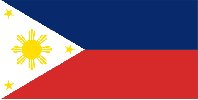 |
|
 |
|
Manila is the capital city of the Philippines. It is one of the sixteen cities (along with the small municipality of Pateros) that comprise Metro Manila. Manila has a population of 1,652,171 according to the 2010 census. Manila is the second most populous city in the Philippines, behind its neighbor, Quezon City. The populace inhabit an area of only 38.55 square kilometers, making Manila the most densely populated city in the world. The city is divided into six legislative districts and sixteen geographical districts. Bustling commerce and some of the most historically and culturally significant iconic landmarks in the country, as well as the seat of the executive and judicial branches of the government are to be found in the city. Manila is also home to many scientific and educational institutions, numerous sport facilities, and other culturally and historically significant venues.
The earliest written account of the city is the 10th-century Laguna Copperplate Inscription which describes a context of an Indianised kingdom maintaining diplomatic relations with the Kingdom of Medang. The city was invaded by Brunei's Sultan Bolkiah and was already Islamized by the 15th century when the Spanish first arrived. Manila eventually became the center of Spanish activity in the Far East and one end of the Manila-Acapulco Galleon trade route inking Latin America and Asia. This caused it to be called the "Pearl of the Orient". Several Chinese insurrections, local revolts, a British Occupation and a Sepoy mutiny also occurred thereafter. Later, it saw the rise of the Philippine Revolution which was followed by the arrival of the Americans who made contributions to the city's urban planning and development only to have most of those improvements lost in the devastation of World War II. Since then the city has been rebuilt.
Click on the picture to view a larger version